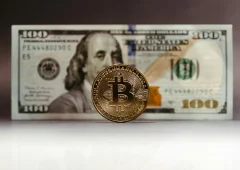Binance Introduces New Trading Pairs and Bot Services on Spot Platform
02.04.2025 20:00 1 min. read Alexander Stefanov
Binance, one of the largest cryptocurrency exchanges globally, is enchancing its Spot trading platform by introducing new trading pairs and Trading Bot services.
The exchange aims to expand trading opportunities, especially with USDC-based pairs, to cater to the rising interest in stablecoin trading.
Among the newly added pairs are API3/USDC, AUCTION/TRY, AUCTION/USDC, BANANA/USDC, GUN/USDC, QNT/USDC, and THETA/USDC.
In addition to new trading pairs, Binance is also rolling out Trading Bot services for a range of pairs. Users will have access to Spot Algo Orders for pairs like API3/USDC, AUCTION/TRY, AUCTION/USDC, BANANA/USDC, GUN/USDC, QNT/USDC, and THETA/USDC.
Moreover, the Spot Grid and Spot DCA services will support pairs such as AAVE/USDC, ACT/USDC, PNUT/USDC, SEI/USDC, and VIC/USDT.
To further incentivize trading, Binance is offering reduced taker fees on both existing and newly listed USDC spot and margin trading pairs for an unspecified period. This initiative reflects Binance’s strategy to boost trading flexibility and appeal to users looking for stablecoin-based transactions.
-
1
Ethereum Faces Heavy Sell-Off Amid Rising Geopolitical Tensions
13.06.2025 14:00 1 min. read -
2
Bitcoin Holds Above $100K, But Analyst Sees Trouble Brewing
07.06.2025 17:00 1 min. read -
3
Is a New Altcoin Cycle Brewing in 2025?
13.06.2025 12:00 1 min. read -
4
Dogecoin Stuck in a Holding Pattern – Can Bulls Force a Break Above $0.21?
15.06.2025 16:00 2 min. read -
5
South Korea’s New President Pushes for Domestic Stablecoins
11.06.2025 16:00 2 min. read
First-Ever Staked Crypto ETF Set to Launch in the U.S. This Week
A new milestone in cryptocurrency investment products is set to unfold this Wednesday, as REX Shares prepares to launch the first-ever U.S.-listed staked crypto exchange-traded fund (ETF), according to a company announcement shared on X.
XRP Price Prediction: Can XRP Hit $4 After XRPL EVM Sidechain Launch?
XRP (XRP) has gone up by 1.2% in the past 24 hours but, behind that mild price increase, there has been a significant spike in trading volumes. During this period, $2.4 billion worth of XRP has exchanged hands, representing an 83% increase. Just hours ago, Ripple announced the official launch of its Ethereum-compatible sidechain called […]
Ethereum Launches Onchain Time Capsule to Mark 11th Anniversary in 2026
A community-driven initiative launched Monday is inviting Ethereum users to lock art, memories, and personal messages inside a decentralized “time capsule,” set to be opened on the network’s 11th anniversary next year.
Ethereum Accumulation Surges While U.S. Politics Stir Market Uncertainty
A new CryptoQuant report highlights a growing divergence between long-term Ethereum holders and short-term Bitcoin buyers, with significant accumulation behavior unfolding in both markets amid increasing political and economic tension in the U.S.
-
1
Ethereum Faces Heavy Sell-Off Amid Rising Geopolitical Tensions
13.06.2025 14:00 1 min. read -
2
Bitcoin Holds Above $100K, But Analyst Sees Trouble Brewing
07.06.2025 17:00 1 min. read -
3
Is a New Altcoin Cycle Brewing in 2025?
13.06.2025 12:00 1 min. read -
4
Dogecoin Stuck in a Holding Pattern – Can Bulls Force a Break Above $0.21?
15.06.2025 16:00 2 min. read -
5
South Korea’s New President Pushes for Domestic Stablecoins
11.06.2025 16:00 2 min. read


